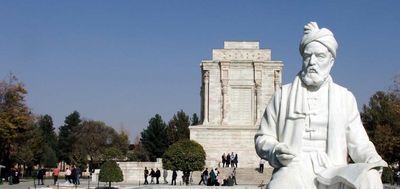Interested applicants outside the country can also register for the online course that will begin on July 27.
Myths and history, myth and dreams, myth and epic, as well as myth and art are among the topics to be discussed during the 10-session course.
Kazzazi is a poet, scholar, and expert on Shahnameh. He is one of the Iranian Eternal Figures who was honored in 2005.
The Shahnameh millennium was accepted on UNESCO’s 2010 calendar of events.
The Shahnameh, in which the Persian national epic found its final and enduring form, was completed in 1010.
It was written for Sultan Mahmud of Ghazna. However, he didn’t welcome it because of the Shia religion of Ferdowsi.
According to some historical sources on Persian literature, Ferdowsi spent 30 years writing the Shahnameh, which is comprised of nearly 60,000 verses.
Also known as “Book of Kings” in English, the Shahnameh is based mainly on the Khwatay-namak, a history of the kings of Persia in Pahlavi (Middle Persian) from mythical times down to the 7th century.
For nearly 1000 years, Shahnameh has remained one of the most popular works in the Persian-speaking world.
Source: Tehran Times

